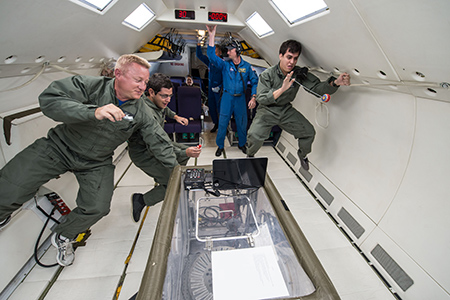Originally published September 29, 2015
NASA has selected two University of Texas at El Paso graduate students to present their research at international aerospace conferences in October. The students’ work revolves around fabricating construction materials from lunar and Martian dust.
With the mentorship and supervision of Evgeny Shafirovich, Ph.D, associate professor of mechanical engineering, the students have shown that it’s possible to create bricks from lunar and Martian regolith — the layer of loose dust, sand and rock covering the surface of the moon and planet Mars.

“Bricks can be used for a launch pad, human shelter, roads, rover storage and more on the moon,” said Armando Delgado, a doctoral student in the Department of Mechanical Engineering. “To take the bricks there from Earth would be too expensive because of the (weight of the) payload.”
The team’s approach to creating bricks is unique because it involves “in-situ” resource utilization (ISRU) – the use of materials available around you: in this case, the Martian and lunar regolith. By mixing magnesium with the regolith and combusting the two, the team has proven that material as strong as common bricks can be formed. Tests of this process onboard a reduced-gravity aircraft, an opportunity offered through NASA’s Microgravity University, were also successful.
“UTEP’s team has already presented this research at different conferences as well as published five articles about the work in peer-reviewed journals,” Delgado said. “And the feedback has been very positive. To the best of our knowledge, this is the least energy-consuming way to make bricks utilizing the resources on the moon and Mars.”
Delgado will attend the 66th International Astronautical Congress in Jerusalem, Israel, while graduate mechanical engineering student Sergio Cordova will go to the 2015 Annual Meeting of the Lunar Exploration Analysis Group in Columbia, Maryland. Both Delgado and Cordova are research assistants at UTEP’s Center for Space Exploration Technology Research (cSETR).
The students’ travel and accommodations will be funded by NASA as a result of their pioneering work in next-generation space research.